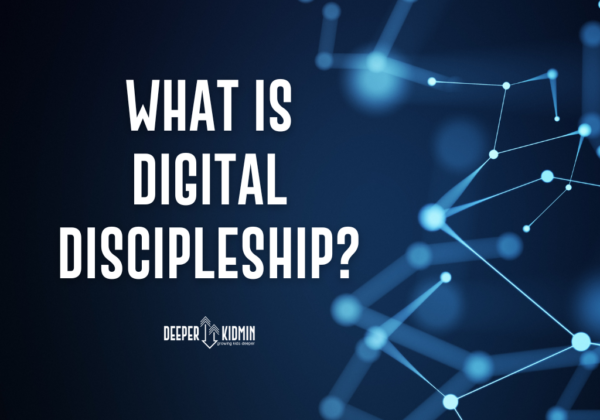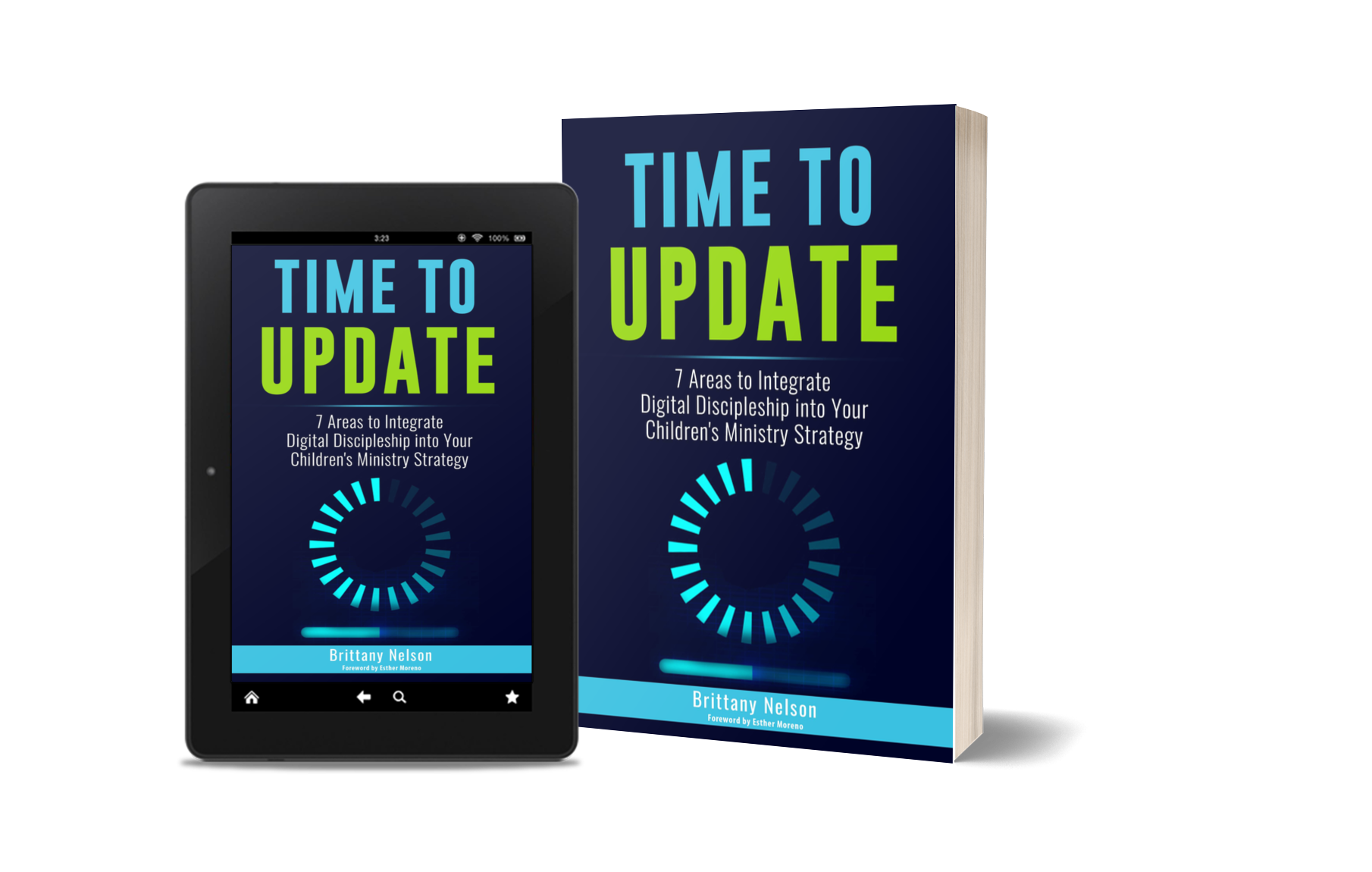
What comes to mind when you hear “digital discipleship”?
When I asked this question in a few different Facebook groups, most of the answers mentioned Zoom, online classes, or YouTube channels. But digital discipleship is so much MORE than live-streaming your children’s ministry.
So what exactly IS digital discipleship? Here’s an excerpt from my new book Time to Update that defines digital discipleship and why it’s something every kidmin leader needs to integrate digital discipleship into their children’s ministry strategy:
We update everything in our lives and ministries. We regularly update our phones and computers to keep them running correctly. We update the worship songs we use and the curriculum we teach. Even when transitioning from one teaching series to another, we often update the physical environment of the children’s ministry with new backdrops, décor, and imagery to stay relevant to the series theme. So, why wouldn’t we also update our methods and strategy for discipleship to include the digital world in which everyone now spends a large portion of their time?
What is Digital Discipleship?
In the broader sense, discipleship is the process of guiding someone into a deeper, more vibrant relationship with Jesus through teaching, encouragement, and personal connection. In her book From Social Media to Social Ministry, Nona Jones emphasizes the importance of relationships in the discipleship process. She defines discipleship as “the product of dialogue about how to apply [biblical] content to people’s lives in a way that leads to continual transformation.”
Discipleship in children’s ministry means partnering with parents in that continual process of growing kids deeper in their relationship with Jesus. There may be more hand motions in the worship songs and glitter in the supply closets, but the goal of discipleship remains the same.
2 Peter 3:18 says, “Grow in the grace and knowledge of our Lord and Savior Jesus Christ. To Him be glory both now and forever!” Discipling kids means helping them grow deeper in their relationship with and understanding of Christ and cheering them on as they go serve others in His name, for His glory. Ministry leaders want kids to know Jesus, understand their place in His story, and want to follow His example of a life of servitude.
In children’s ministry, your strategy, plans, and efforts radiate from this desire to make disciples of the next generation. But to stay relevant to this next generation of kids and families, delivering the gospel message must include technology and a digital approach.
Digital discipleship is the process of making disciples through digital methods. Notice that the end goal, making disciples, stays the same. But the methods and procedures for doing so adopt a digital influence. The digital world offers children’s ministry leaders another tool to share the gospel, and I’d argue it’s the most powerful one. How leaders communicate and teach the gospel message must be updated to reach the digital natives they now serve.
When I say digital discipleship, I don’t just mean live streaming your children’s ministry service or using a downloadable curriculum. And I’m not advocating that you hit play on a Bible story video and call it a Sunday. A digital children’s ministry, like a YouTube channel or weekly Zoom meetings, might be part of your overall digital discipleship strategy, but they aren’t discipleship strategies in and of themselves.
These resources merely act as another tool or program you use to reach the kids and families you serve, both inside and outside your church building. A digital approach to children’s ministry involves intentionally using technology to enhance and improve various areas within the ministry, from administrative tasks no one ever sees to communication with families to teaching Bible lessons on Sunday mornings.
When Jesus invited His disciples to follow Him, He told them: “Come, follow me, and I will send you out to fish for people” (Mark 4:19). Digital discipleship doesn’t replace the church or replace the necessity of in-person relationships. It’s not reeling in the fishing lines you have already cast out (the building, in-person programs, etc.). Digital discipleship is throwing out another fishing line, giving you another tool, and increasing opportunities to connect with kids and families.
Want to learn more about digital discipleship and how to integrate it into your children’s ministry? Check out Time to Update, my new book! Learn more here.


Leave a comment
You must be logged in to post a comment.